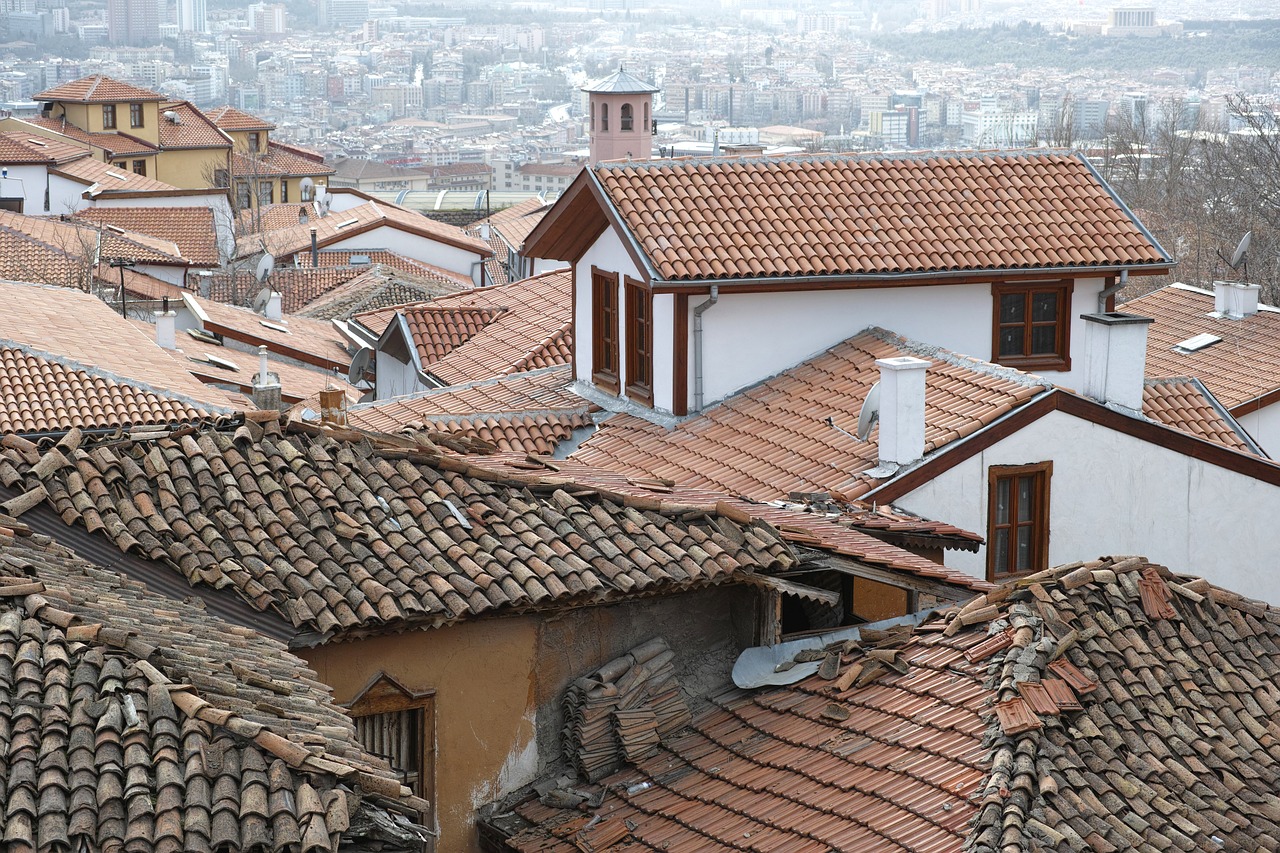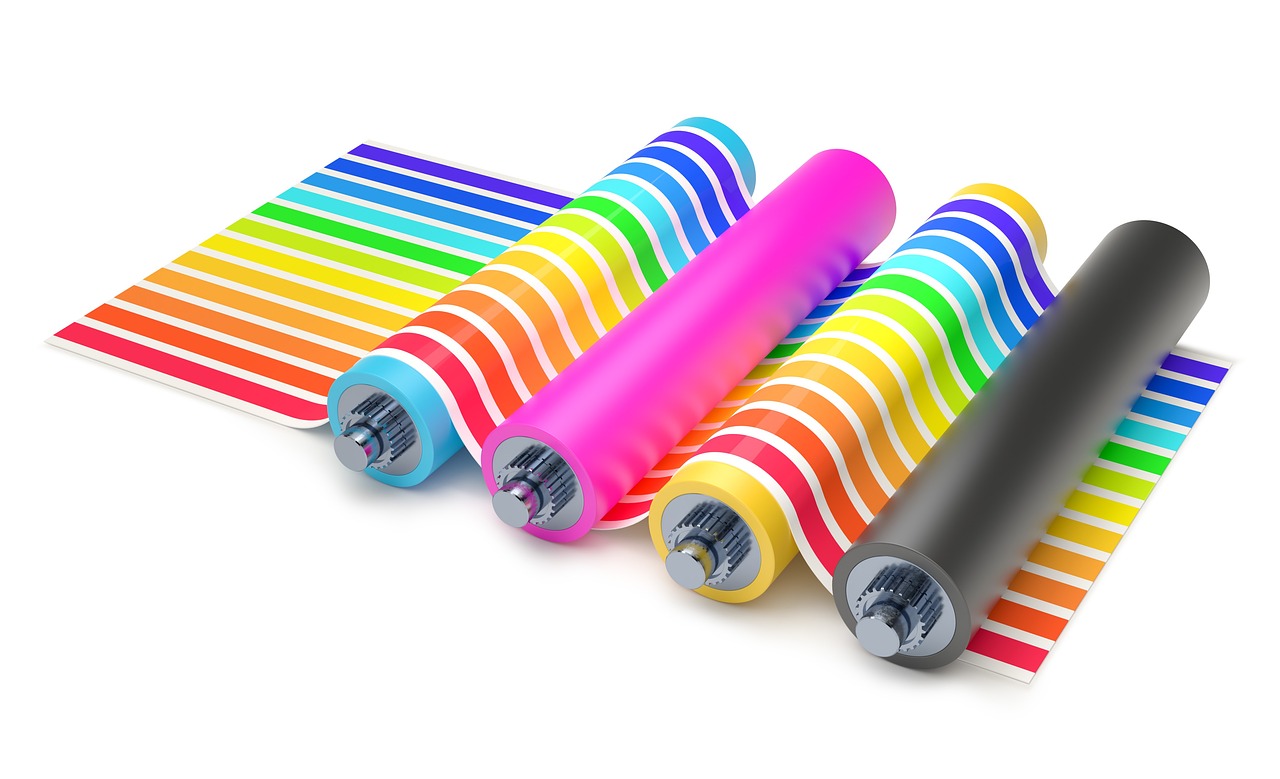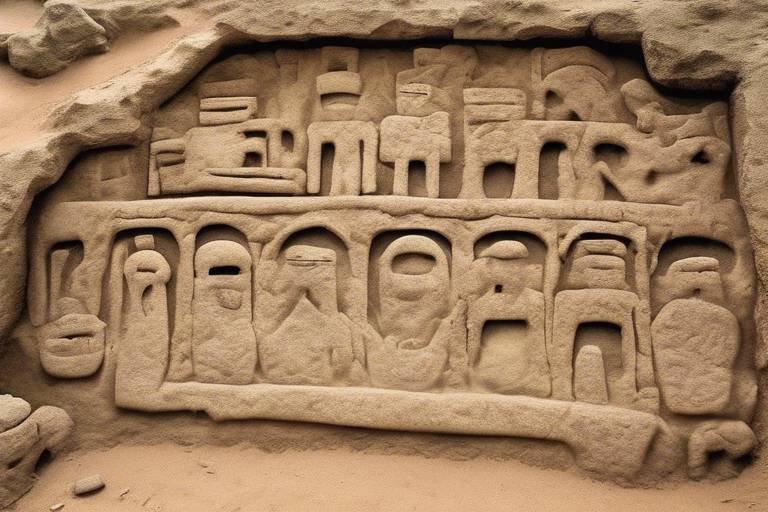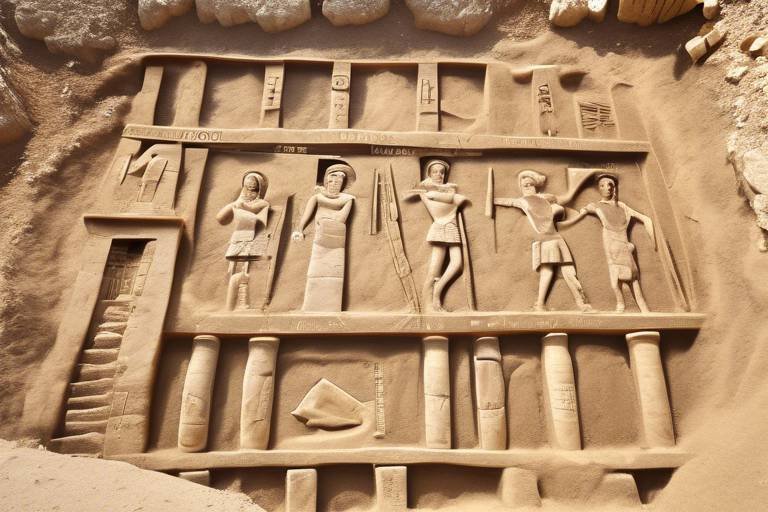The Use of 3D Printing in Artifact Reconstruction
3D printing technology has emerged as a groundbreaking tool in the realm of artifact reconstruction, reshaping the way we preserve and study ancient objects. By harnessing the power of this innovative technology, researchers and historians can now produce precise replicas of historical artifacts with unprecedented accuracy and detail.
Traditionally, the process of reconstructing ancient artifacts posed numerous challenges, from fragile materials to intricate designs that were difficult to replicate. However, with the advent of 3D printing, these obstacles have been overcome, opening up a world of possibilities for the preservation and exploration of our cultural heritage.
One of the key advantages of using 3D printing in artifact reconstruction is the unparalleled precision it offers. The technology allows for the recreation of intricate details and complex structures that were once impossible to achieve through traditional methods. From delicate engravings on ancient pottery to intricate sculptures, 3D printing can capture every nuance with remarkable accuracy.
Moreover, 3D printing enables customization and adaptation of reconstructed artifacts to suit specific research or display requirements. Researchers can tailor the size, shape, and materials of the replica to meet their exact needs, providing a level of flexibility that was previously unheard of in the field of artifact reconstruction.
Real-world case studies further exemplify the transformative power of 3D printing in artifact reconstruction. Through the technology, damaged or fragmented ancient sculptures have been meticulously reconstructed, breathing new life into these historical treasures. Additionally, entire archaeological sites have been recreated using 3D printing, allowing for in-depth study and preservation of these invaluable locations.
Looking ahead, the future implications of 3D printing in artifact reconstruction are vast. The technology holds the potential to revolutionize the field, offering new ways to preserve cultural heritage for future generations. As 3D printing continues to advance, the possibilities for reconstructing and studying ancient artifacts will only continue to expand, ensuring that our rich history remains accessible and protected.
1. How accurate are 3D printed replicas compared to the original artifacts?
2. What are the cost implications of using 3D printing in artifact reconstruction?
3. Can 3D printing technology be used to recreate extremely fragile artifacts?
4. Are there limitations to the size of artifacts that can be reconstructed using 3D printing?

Historical Significance
Historical artifacts hold immense significance as they provide a tangible link to our past, offering insights into ancient civilizations, cultures, and technologies. These artifacts are invaluable in understanding the evolution of human society and preserving our shared heritage for future generations. However, the preservation and reconstruction of historical objects present a unique set of challenges, often requiring delicate handling and meticulous attention to detail.
Traditional methods of artifact reconstruction involve manual labor and are often time-consuming and prone to human error. Restoring damaged artifacts to their original form can be a painstaking process, requiring skilled craftsmen and conservators to carefully piece together fragments and fill in missing parts. The fragility of ancient materials further complicates the restoration process, making it a delicate and labor-intensive task.
Moreover, the limited availability of resources and expertise can hinder the reconstruction efforts, leading to delays in research and preservation initiatives. The high costs associated with traditional reconstruction methods can also pose a barrier to widespread access to reconstructed artifacts for educational and research purposes.

Advantages of 3D Printing
When it comes to artifact reconstruction, the utilization of 3D printing technology brings forth a myriad of advantages that have revolutionized the field. One of the most prominent benefits is the accuracy that 3D printing offers, allowing for the creation of precise replicas of ancient objects with intricate details.
Furthermore, the speed at which 3D printing can produce these replicas is remarkable, significantly reducing the time required for reconstruction compared to traditional methods. This rapid turnaround time not only enhances efficiency but also enables researchers and archaeologists to study and analyze artifacts more quickly.
In addition to accuracy and speed, cost-effectiveness is another key advantage of 3D printing in artifact reconstruction. Traditional reconstruction methods often involve high costs due to skilled labor, materials, and time-consuming processes. With 3D printing, the overall cost of reconstruction can be significantly reduced while maintaining quality and precision.

Precision and Detail
When it comes to artifact reconstruction, precision and detail play a crucial role in accurately replicating ancient objects. 3D printing technology has revolutionized this process by allowing for the recreation of intricate details and complex structures with remarkable accuracy. Unlike traditional reconstruction methods, which may struggle to capture the fine nuances of historical artifacts, 3D printing offers a level of precision that is unparalleled.
Imagine being able to reproduce the delicate carvings of a centuries-old sculpture or the intricate patterns of an ancient artifact with utmost accuracy. 3D printing makes this possible by translating digital designs into physical objects, capturing every minute detail with precision. This level of detail not only aids in research and preservation efforts but also enhances the educational value of reconstructed artifacts.
Through the use of advanced 3D scanning technologies, artifacts can be meticulously captured and transformed into digital models that serve as the blueprint for 3D printing. This process ensures that even the most intricate features of an object, such as fine engravings or subtle textures, are faithfully reproduced in the final replica.

Customization and Adaptation
Customization and adaptation are key advantages of utilizing 3D printing technology in artifact reconstruction. With traditional methods, it is often challenging to tailor reconstructed artifacts to specific research or display requirements. However, 3D printing offers a flexible approach that allows for customization on a detailed level.
Imagine being able to adjust the size, shape, or even the material of a reconstructed artifact with precision to fit the exact specifications needed. This level of adaptation is a game-changer in the field of artifact reconstruction, providing researchers and historians with the ability to create replicas that meet their unique needs.

Case Studies
When it comes to exploring the use of 3D printing in artifact reconstruction, case studies play a crucial role in showcasing the practical applications and success stories of this innovative technology. By delving into real-world examples and projects, we can witness firsthand how 3D printing has revolutionized the way historical artifacts are preserved, studied, and displayed.
One fascinating case study involves the reconstruction of ancient sculptures using 3D printing technology. These sculptures, often damaged or fragmented over time, pose significant challenges in traditional reconstruction methods. However, with the precision and accuracy offered by 3D printing, experts have been able to recreate these intricate artworks with remarkable detail, preserving their historical significance for future generations to appreciate.
Furthermore, 3D printing has been instrumental in recreating entire archaeological sites for study and preservation purposes. By digitally capturing and replicating the intricate details of these sites, researchers can explore and analyze them in ways that were previously impossible. This not only aids in preserving cultural heritage but also provides invaluable insights into ancient civilizations and their way of life.
These case studies exemplify the transformative power of 3D printing in artifact reconstruction, demonstrating its ability to overcome the limitations of traditional methods and unlock new possibilities in the field of archaeology and cultural preservation.

Ancient Sculptures
When it comes to the reconstruction of ancient sculptures, 3D printing technology has proven to be a game-changer. The ability to recreate these intricate and often fragile pieces with remarkable accuracy has opened up new possibilities in the field of archaeology and art history. Through the use of 3D scanning techniques, damaged or fragmented ancient sculptures can be digitally captured and then reproduced in physical form using 3D printers.
One of the key advantages of using 3D printing for ancient sculpture reconstruction is the level of detail that can be achieved. Traditional methods often struggle to capture the fine nuances of these sculptures, but with 3D printing, every curve, texture, and intricate design can be faithfully replicated. This level of precision not only aids in research and study but also allows for the creation of visually stunning replicas for display and educational purposes.
Moreover, 3D printing offers a level of customization and adaptability that is unparalleled. Researchers and curators can adjust the size, scale, or even color of the reconstructed sculptures to better fit their intended use. This flexibility ensures that the reconstructed artifacts can meet specific research requirements or be tailored for exhibition in museums or educational settings.
Furthermore, the use of 3D printing in ancient sculpture reconstruction has enabled the restoration of pieces that were previously thought to be beyond repair. By piecing together fragments or recreating missing parts, damaged sculptures can be brought back to their former glory, preserving these invaluable pieces of history for future generations to appreciate and study.

Archaeological Sites
When it comes to reconstructing archaeological sites, 3D printing technology has opened up a whole new realm of possibilities. Imagine being able to recreate ancient ruins and structures with incredible precision and accuracy, all thanks to the power of 3D printing. This innovative technology allows archaeologists and researchers to bring these historical sites back to life in ways never thought possible before.
One of the key advantages of using 3D printing in the reconstruction of archaeological sites is the ability to create highly detailed and intricate models. By capturing every nook and cranny of a site, researchers can study and analyze it in great detail without the risk of damaging the original structure. This level of precision is crucial in preserving the authenticity and historical significance of these sites for future generations.
Furthermore, 3D printing enables the recreation of entire archaeological sites in a cost-effective and efficient manner. Instead of relying on traditional methods that can be time-consuming and labor-intensive, researchers can now produce accurate replicas of sites in a fraction of the time. This not only speeds up the reconstruction process but also allows for multiple copies to be made for research and educational purposes.
Moreover, the adaptability of 3D printing technology plays a significant role in the reconstruction of archaeological sites. Researchers can customize the scale, materials, and even colors of the models to suit their specific needs. Whether it's creating a miniature replica for a museum display or a life-size reconstruction for field studies, 3D printing offers flexibility and versatility that traditional methods lack.
Overall, the use of 3D printing in reconstructing archaeological sites is a game-changer in the field of archaeology. It not only enhances the way we study and preserve these historical treasures but also opens up new avenues for research and exploration. With its ability to recreate the past with stunning accuracy and detail, 3D printing is shaping the future of archaeological reconstruction in ways we could have only dreamed of before.

Future Implications
As we look towards the future, the implications of 3D printing in artifact reconstruction are vast and promising. This technology has the potential to revolutionize the way we preserve and study historical objects, offering new possibilities and opportunities for researchers, historians, and educators alike.
One of the key future implications of 3D printing in artifact reconstruction is the democratization of access to historical objects. By creating accurate replicas through 3D printing, museums and institutions can make rare artifacts more widely available to the public, allowing people from all over the world to experience and learn from these treasures.
Furthermore, 3D printing opens up avenues for new research and discoveries in the field of archaeology. Researchers can use 3D printed replicas to conduct experiments, test hypotheses, and gain insights into the past that were previously impossible with traditional reconstruction methods. This technology has the potential to unlock new understandings of ancient civilizations and cultures.
Moreover, the future implications of 3D printing in artifact reconstruction extend to the realm of cultural preservation. By creating digital archives of 3D models, we can ensure that even if the original artifacts are lost or damaged, their legacy can live on through accurate reproductions. This technology offers a way to safeguard our cultural heritage for future generations.
In conclusion, the future implications of 3D printing in artifact reconstruction are profound, offering a glimpse into a world where the past is not just preserved but brought to life in stunning detail. As this technology continues to advance, we can expect to see even more innovative applications and discoveries that will shape our understanding of history for years to come.
Frequently Asked Questions
- What is 3D printing?
3D printing is a cutting-edge technology that allows for the creation of three-dimensional objects from a digital file. It works by layering material, such as plastic or metal, to build up the object layer by layer.
- How is 3D printing used in artifact reconstruction?
3D printing is used in artifact reconstruction to create precise replicas of ancient objects for research, preservation, and educational purposes. It enables the recreation of intricate details and complex structures that traditional methods struggle to achieve.
- What are the advantages of using 3D printing in artifact reconstruction?
The advantages of using 3D printing include accuracy, speed, and cost-effectiveness. It allows for customization and adaptation of reconstructed artifacts to meet specific research or display requirements, making it a versatile tool in the field of archaeology.
- Can 3D printing be used to reconstruct damaged artifacts?
Yes, 3D printing can be used to reconstruct damaged or fragmented artifacts with remarkable accuracy. It has been successfully applied to ancient sculptures and archaeological sites, showcasing its potential in preserving cultural heritage.
- What are the future implications of 3D printing in artifact reconstruction?
The future implications of 3D printing in artifact reconstruction are vast. It has the potential to revolutionize the field, offering new ways to study, preserve, and showcase historical artifacts for generations to come.



















